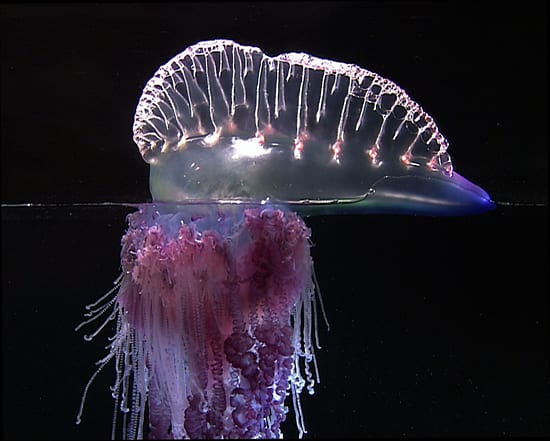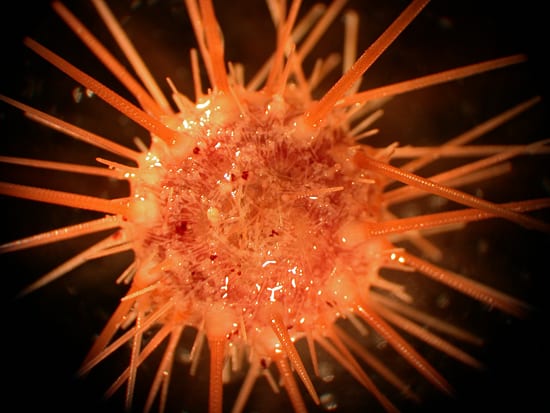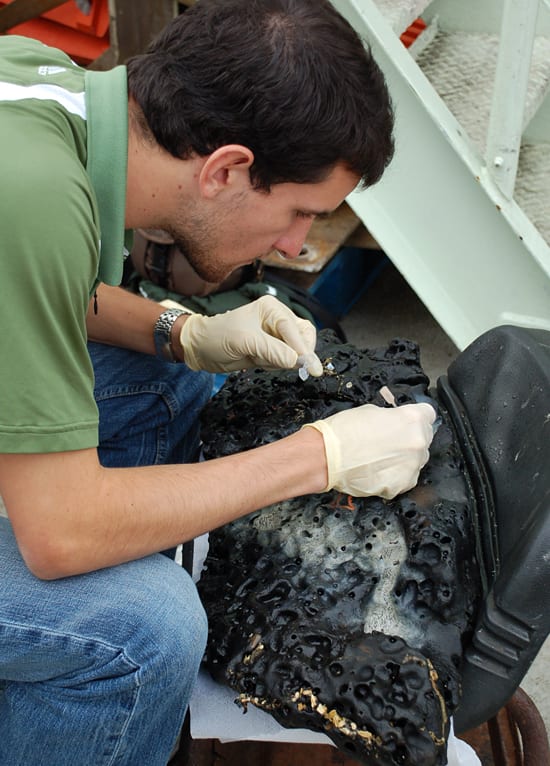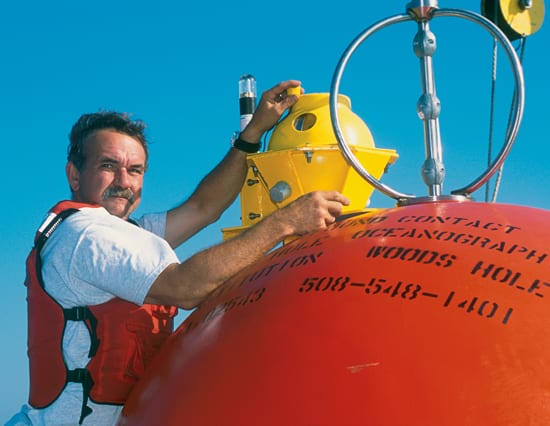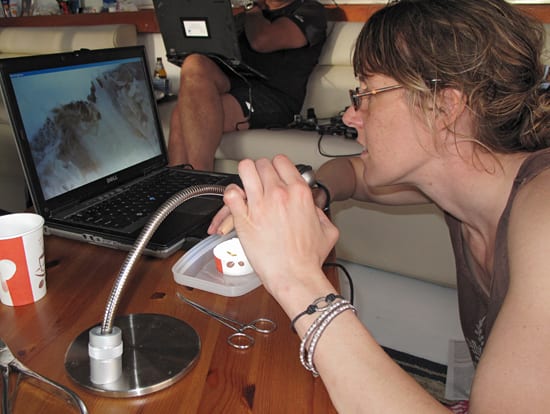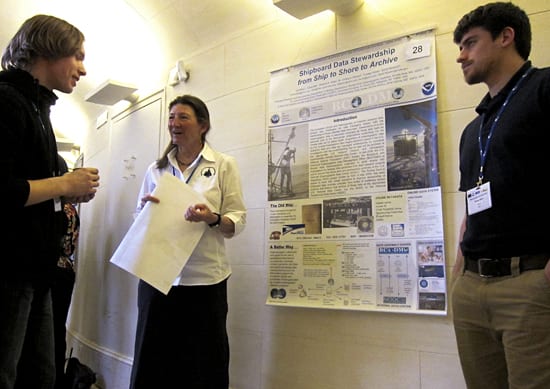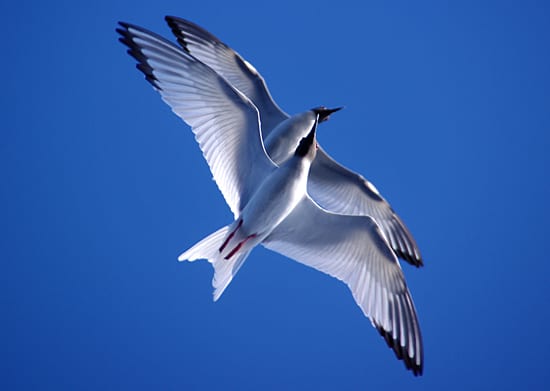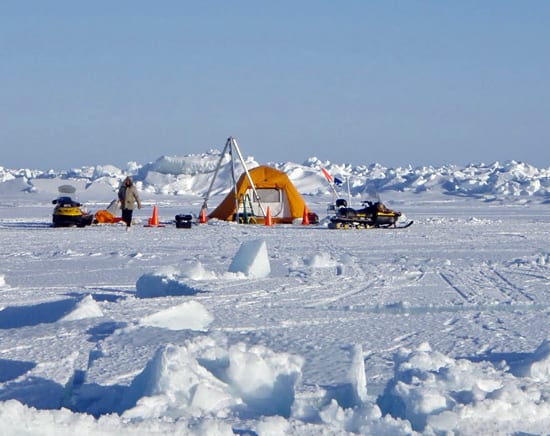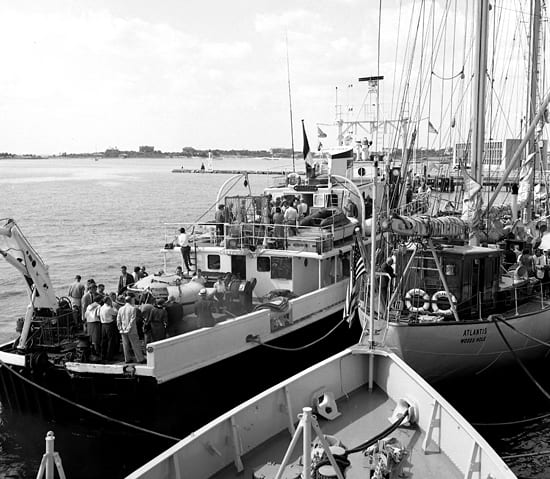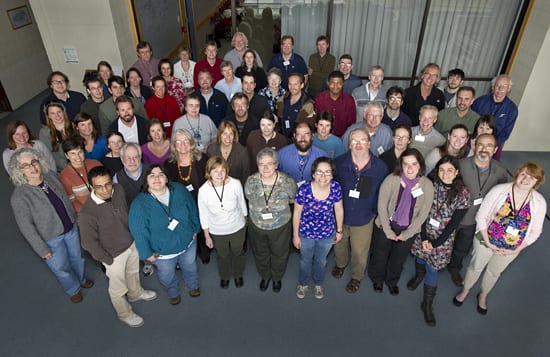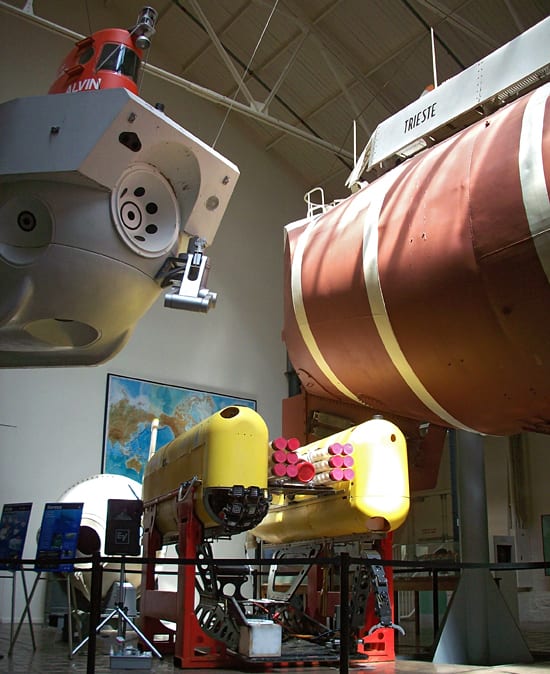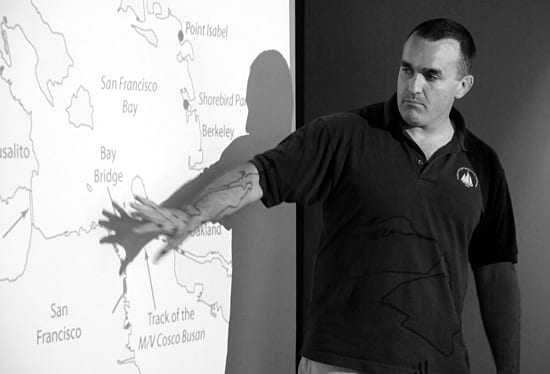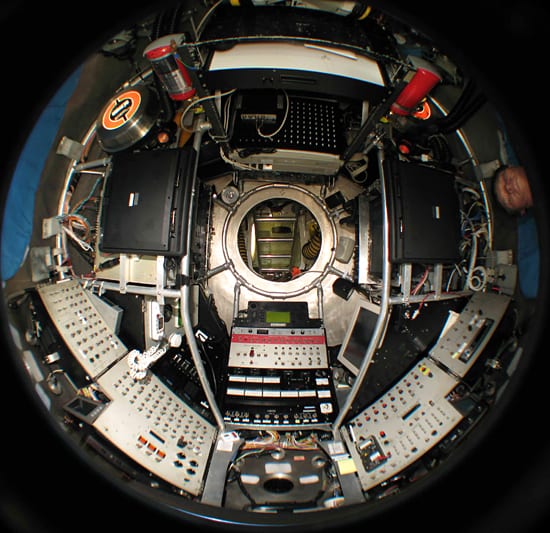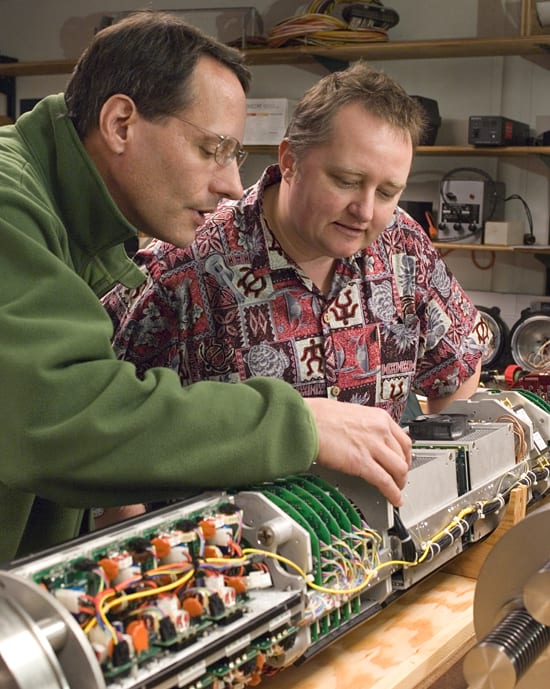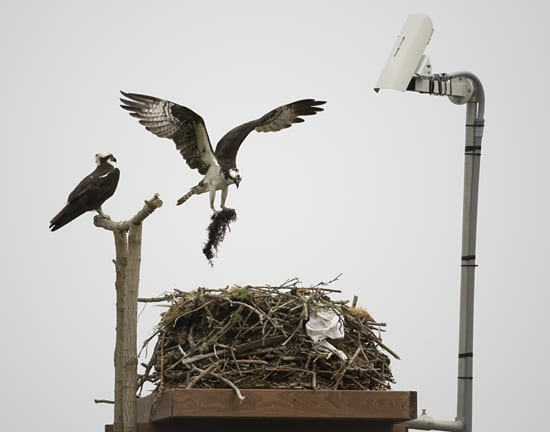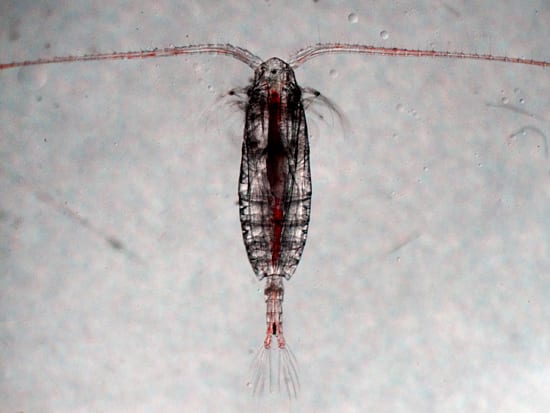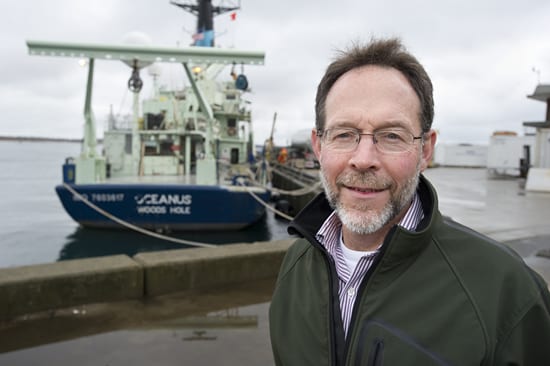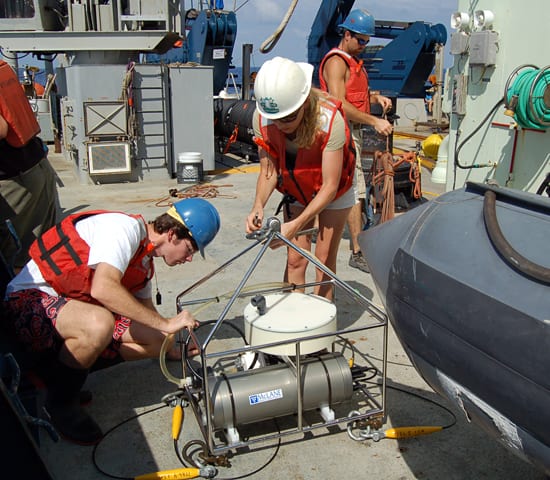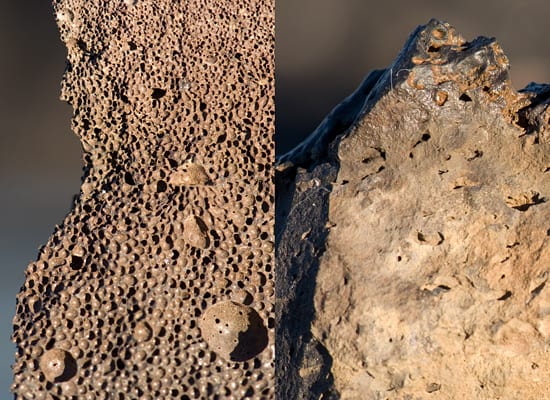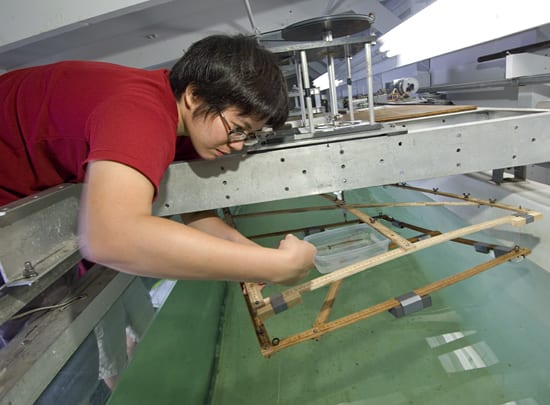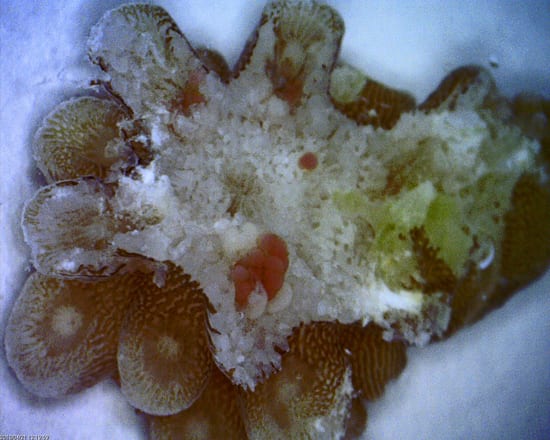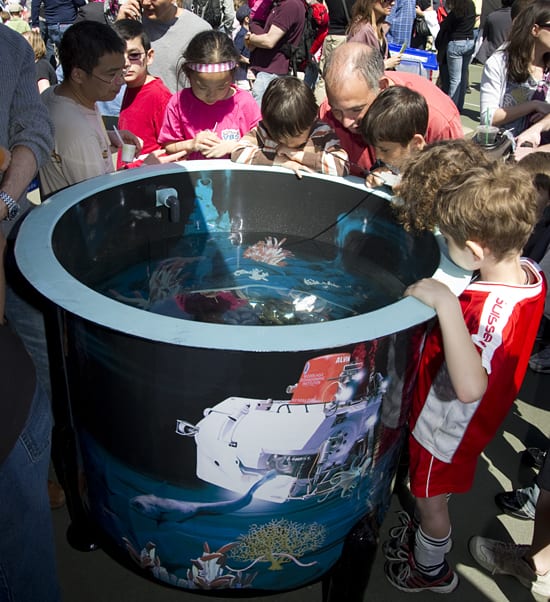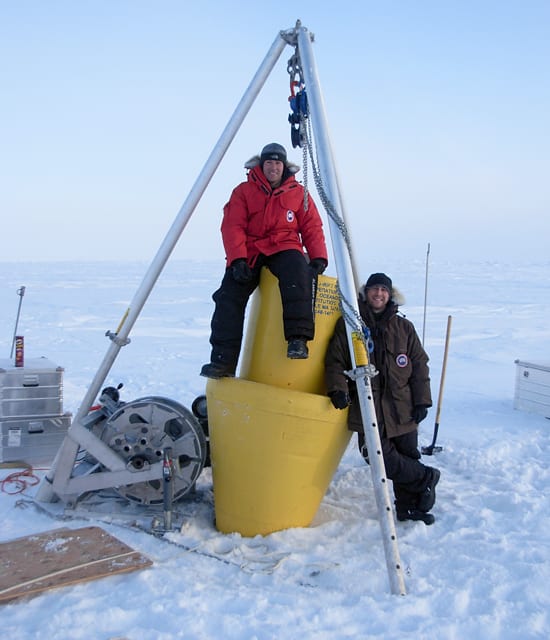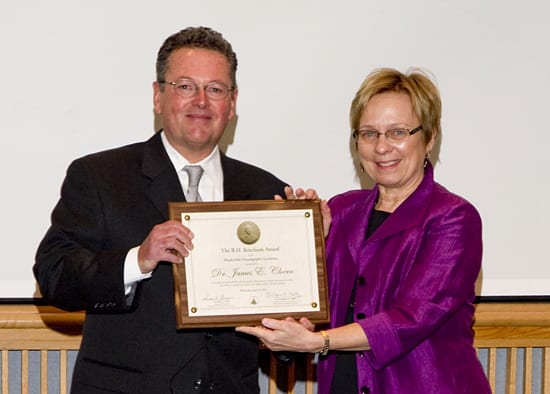Multimedia Items
Beautiful but dangerous
Physalia physalis, commonly known as the Portuguese man-of-war or bluebottle, lives in warm waters worldwide and is famous for its painful stinging tentacles up to 50 meters (165 feet) long.…
Read MoreSweet Hitchhiker
This sea urchin was collected from the ocean floor near the Galapagos Rift in June 2002. The hitch-hiking urchin was found in the basket on the front of the Alvin…
Read MoreGood day at black rock
Blair Paul, a graduate student at the University of California, Santa Barbara, gently scrapes biological specimens from a chunk of asphalt that had been at the bottom of the Santa…
Read MoreSeeing the light
Prior to deployment, Senior Engineering Assistant Scott Worrilow checks the ARGOS beacon transmitter on a subsurface buoy. The buoy system is deployed with the transmitter in a standby mode that…
Read MoreA Preview of Coral Spawning
Assistant scientist Ann Tarrant dissects coral fragments and scans microscopic images for signs of egg development. Tarrant is working with research specialist Anne Cohen and postdoc investigator Neal Cantin to…
Read MoreHall of Science
Cyndy Chandler (center) and Tobias Work (right) talk with Alexander Smirnov (Arctic and Antarctic Research Institute, Roshydromet, Russian Federation) during a poster session at the International Conference on Marine Data…
Read MoreNight gulls, not owls
Two Galapagos Swallow Tailed Gulls soar in the sky above the R/V Atlantis during a 2010 expedition. The birds, which are the only fully nocturnal gulls and seabirds in the…
Read MoreSetting up an Arctic camp
The REMUS research crew in Barrow, Alaska, had to construct this camp–Ice Camp No. 2–because their first one was taken down by a traveling iceberg the night before.The WHOI team,…
Read MoreShipmates
The research vessel Atlantis at the Woods Hole Oceanographic Institution (WHOI) dock in 1959 along with the Calypso — a former British Royal Navy Minesweeper converted into a research vessel…
Read MoreCalling all sea squirt scientists!
Participants in the third International Invasive Sea Squirt Conference, held at WHOI April 26-28, 2010, pose for a commemorative shot. Sea squirts — or tunicates — are spongey, sack-like filter…
Read MoreThree deep in the museum
A full-scale model of the submersible Alvin (left) hangs in the US Navy Yard Museum in Washington, D.C., alongside the bathyscaphe Trieste (right), which, in 1960, made the only manned…
Read MoreThe Earl of Oil
WHOI chemist Chris Reddy describes his work on the November 2007 San Francisco Bay oil spill, which occurred when the M/V Cosco Busan struck the San Francisco-Oakland Bay Bridge and…
Read MoreFrom the Bottom Up
During a typical eight-hour dive, the Alvin personnel sphere carries a pilot and two science observers to the sea floor. This image of the sphere was taken with a fisheye…
Read MoreBuilding Deep Sea Vehicles
Andy Bowen and Chris German examine the interior of a robotic vehicle in the National Deep Submergence Laboratory at WHOI, a state-of-the-art lab for development of advanced vehicles for exploring…
Read MoreNew neighbors
During the week of May 3, 2010, a pair of osprey settled onto the nest on the WHOI Quissett campus, allaying fears that the nest would go unoccupied this year.…
Read MoreAn important link
Crustaceans come in all sizes. At the top of the scale are crabs with foot-long legs and tasty lobsters. Down near the bottom are copepods — critters the size of…
Read MoreTaking the helm
Rob Munier was named the newest vice president for Marine Operations and Facilities at WHOI on March 1. He has spent more than 500 days at sea during a 30-year…
Read MoreThat was just SUPR
John (Chip) Breier (left) and Carly Strasser recover a plankton pump mooring and a new particulate sampler, the Suspended Particulate Rosette Sampler (SUPR), which Breier developed with funding from the…
Read MoreLava rocks!
Two types of lava can form from the same volcano. These samples came from an eruption in Antarctica that occurred about 25,000 years ago. They were collected by WHOI geoscientists…
Read MoreWhat does dinner sound like to a whale?
Wu-Jung Lee, a graduate student in the MIT/WHOI Joint Program, adjusts the apparatus that allows her to record sonar echoes from a squid at different orientations. She is trying to…
Read MoreThe Future of a Coral Reef
Dissection of the Red Sea coral Acropora reveals bright pink spheres surrounded by the coral’s white skeleton. These are the coral’s eggs. Each individual Acropora makes both eggs and sperm,…
Read MoreDive in and explore!
During the 2010 Cambridge Science Festival, kids of all ages took a try at navigating a remote-controlled submarine around a mock hydrothermal vent at the ocean floor while learning about…
Read MoreIce camp
Kris Newhall and Jeff Pietro of the Applied Ocean Physics & Engineering Department with the latest ice-tethered profiler (ITP), which was deployed April 20, 2010, from their ice camp located…
Read MoreKetchum Award to James E. Cloern
James E. Cloern, a senior research scientist at the U.S. Geological Survey, received the 15th B.H. Ketchum Award April 28 from WHOI President and Director Susan K. Avery. The WHOI…
Read More
